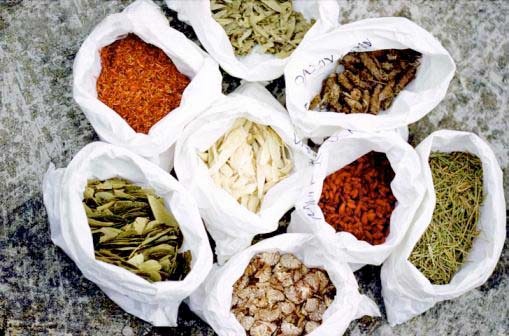Natural Dyes

Dyes from natural vegetable, animal and mineral sources were once the only choices available. Artists and craftsmen compounded their colors from all sorts of natural materials.
For home dyeing, botanicals were the only real source. Until 1828, if it did not come from nature, it did not exist in the dyer’s palette. The palette was limited–browns, yellows oranges and reds were common, greens less so. Blues were difficult to create prior to the discovery of indigo.
With the advent of coal-tar derived dyes (the aniline revolution) in 1828, and later chemically synthesized pigments, natural sources of dye have gradually fallen into disuse. The range of colors available, however, has expanded exponentially.
Until the 1950s, natural plant dyes were the only ones most people used for Easter egg dyeing. Similarly, traditional pysanky were made with natural botanical dyes. It is true that, even in the 1800s, pysanka makers would sometimes buy dyes for unusual or difficult to produce colors from peddlers (blue, most commonly, and nice reds), but even these were most likely natural than chemical (indigo, logwood or brazilwood).
Natural dyes can produce beautiful colors but most, unlike modern chemical dyes, work quite slowly. While most eggs need only a brief dip into an aniline dye bath, they would have to soak much longer, sometimes an hour or two, to become richly colored by natural dyes.
Ukrainians would often purchase and add “halun” (alum, or aluminum potassium sulfate) to the dyes as a mordant to ensure better adhesion of the dye to the egg. The alum also helped protect the eggs from premature fading due to exposure to sunlight. For this reason, pysanky are still known as “halunky” in some regions of Ukraine.
In this section I have included materials about preparation and usage of natural dyes. The pages in this section include:
Natural Dyestuffs: A chart of natural materials used for making pysanka dyes
Botanical Dyes: How to prepare dyes from plant materials
Insect Dyes: All about cochineal
Mordants: Helping natural dyes adhere
Horodetsky: A translation of two letters that Taras Horodetsky wrote about his experiments with natural botanical dyes.
Back to Main Dyes page
Back to Main Supplies page
Back to Main Pysankarstvo page
Back to MAIN Pysanka home page.
Back to Pysanka Index.
Search my site with Google
Dyeing the Old-Fashioned Way


